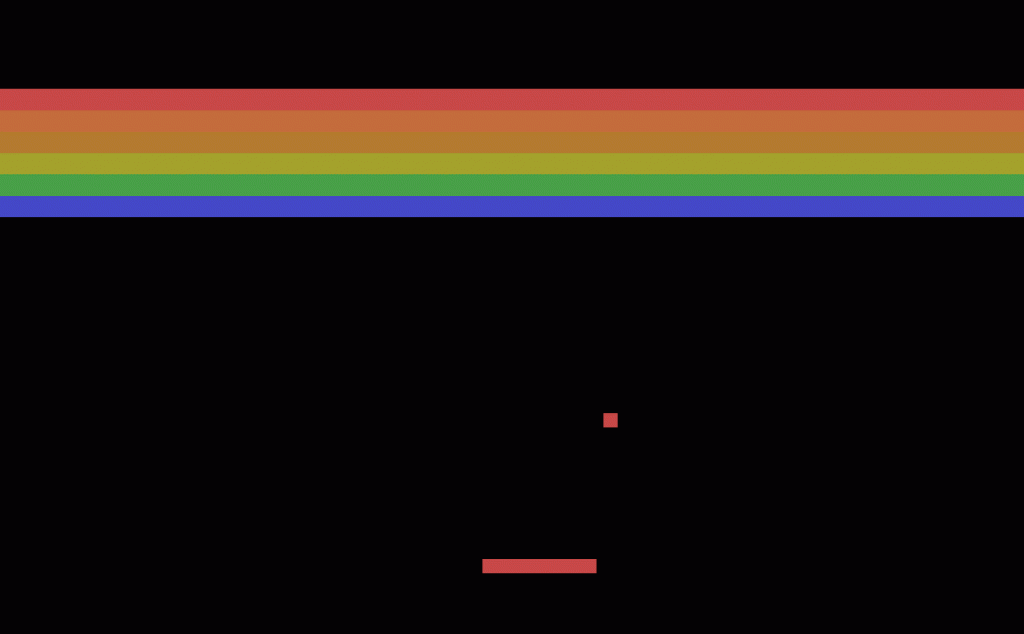Hello friends! Of course, when Pike and I resolve to get the blog going again, we both fall deathly ill and can barely rouse ourselves from bed that exact week! Still, I have largely recovered so here we go with a little blog post!
Here’s what you do: Go to Google Images and type in “atari breakout”. As you will soon see the screen will morph into that precise game, using the images for the blocks! Breakout is one of my very favorite classic games, one I’ve always adored, and it provides a really useful launching off point to show how very very simple systems can still make a very engaging and deep game. If you’re not familiar with Breakout, well, here’s your chance to get acquainted with it – though you might want to hold off if you’re in the middle of an important project ;)

That’s what Breakout looked like in the beginning and very little has changed. Those colored bars across the top consisted of a number of ‘bricks’, and you use the paddle to hit the ball up towards them, with the objective of breaking every brick. Sounds pretty simple, right? Well it is. But marrying such a simple concept with such a sense of satisfaction is the genius that makes Breakout such a great game – all you’re doing is breaking bricks to clear the screen. You’re not fighting wars like in Hearts of Iron, you’re not shooting mans like in Call of Duty, you’re not going fast like Sonic and All Stars Racing Transformed – you’re just breaking some bricks. You’d wonder how it can be so fun and addictive. But that simplicity might be the very reason for it. Anyone can figure out the conceit of Breakout within a few seconds of watching or playing. There’s nothing extraneous to it, not even graphically in the beginning, it’s what you might call a very ‘pure’ game. And when you managed to breakthrough the bricks and get your ball to bounce along the ceiling and the top row? Well, that’s one of the more satisfying experiences in gaming, simple as it might be.
Breakout is a stellar example not just of how videogames began but of what makes them special. With a very simple premise, controls that are simply “left” and “right”, and almost nothing in the way of aesthetics, it’s not something that modern gamers, used to all kinds of razzmatazz and particles and trillions of polygons on Lara Croft’s breasts, might immediately see the value in, but it’s about as pure as a game gets. You’ve got your objective and the means to achieve it, and the only enemy is your own mistakes. It’s pure gameplay, nothing else. That’s something maybe some developers could do with a gentle reminder of in this day and age.
